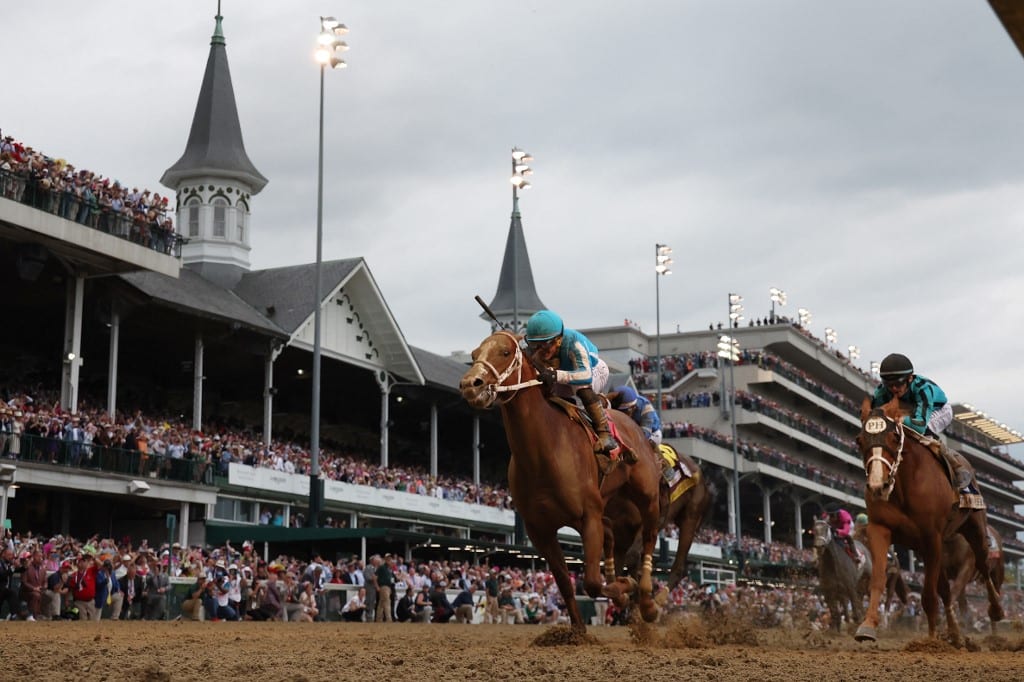
According to year-end reports, horse racing in North America experienced a 3.35% decline in betting last year, although purses were up slightly in 2024.
Horse Racing Continues to Lose Steam in ‘24
It is a concerning trend that has continued over the last three years, with sagging handles across North America’s horse tracks. Technically, 2021 was the last year in which the handle rose from the previous year, but because COVID shuttered businesses across the nation in 2020, including horse tracks, it is not a fair barometer.
According to Equibase, last year was more of the same, as the all-sources handle in 2024 was $11.26 billion, down from $11.65 billion in 2023. We would have to go back to 2018 to find the last year in which horse racing handles experienced a year-over-year increase. Since then, it’s been a downward trajectory, and it is becoming a concern for those in the industry. Bill Pascrell III, a partner at Princeton Public Affairs Group and a longtime gaming industry lobbyist, recently said, “If horse racing doesn’t change soon, it won’t be here.”
Demographic Crisis
Despite the surge in mobile sports betting, the horse racing industry has not caught the same kind of fire, despite many of the sports betting operators offering horse racing betting on their wagering platforms. Online horse betting is widely available, and some believed that would be the elixir for the “Sport of Kings.”
However, that hasn’t been the case, and the aging demographic of horseplayers is a critical obstacle in propping back up a once robust industry. “Horse racing in America is a beautiful, historical, legacy industry,” Pascrell said. “But, like traditional lottery players, the horse racing punters are aging out. And the reason they’re aging out is because they’ve been betting for decades and are into their 70s and 80s and beyond, and they’re used to the pari-mutuel system.”
Horse Racing Fixes
Despite the gloom and doom, there could be solutions to horse racing’s lingering popularity problem.
One major issue that younger bettors are experiencing is the lack of fixed odds in horse racing. Pari-mutuel wagering dominates throughout the country, which means odds are not fixed, and when an inexperienced horse bettor makes a wager on a horse at odds of 10-1, they don’t understand why they may get lower odds once the race goes off.
However, New Jersey and Colorado are two states, the only two in fact, in which fixed-odds horse betting is allowed, and because that mirrors the way sports betting odds and lines are locked in when a bet is made, that is a much more familiar and friendlier form of betting for many sports bettors. Moreover, fixed-odds horse prices will allow bettors to include them in the increasingly popular parlay betting that allows a big reward for a small risk.
“I think horse racing is going to continue to decline in terms of handle until the sports betting operators get more in sync with the tracks and some of the companies out there that offer fixed odds,” Pascrell said. “I think there’s hope, but until things change, update, and upgrade and try to bring a younger player into it, the handle is going to continue to decline.”
Consistent Advertising
Increased advertising would also be a boon for the industry. As many sports betting operators and racetracks will attest, betting handles on the Kentucky Derby, Preakness, Belmont, and Breeders Cup races are always prodigious. And it is no coincidence that advertising on those events is prevalent in the weeks leading up to them.
“Why does sports betting handle continue to grow year over year? The answer to that … is that every other advertisement during a football or basketball game is a sports betting ad,” Pascrell said. “I don’t remember the last time I ever saw an ad for horse racing except the week leading up to like the Belmont or the Kentucky Derby.”






